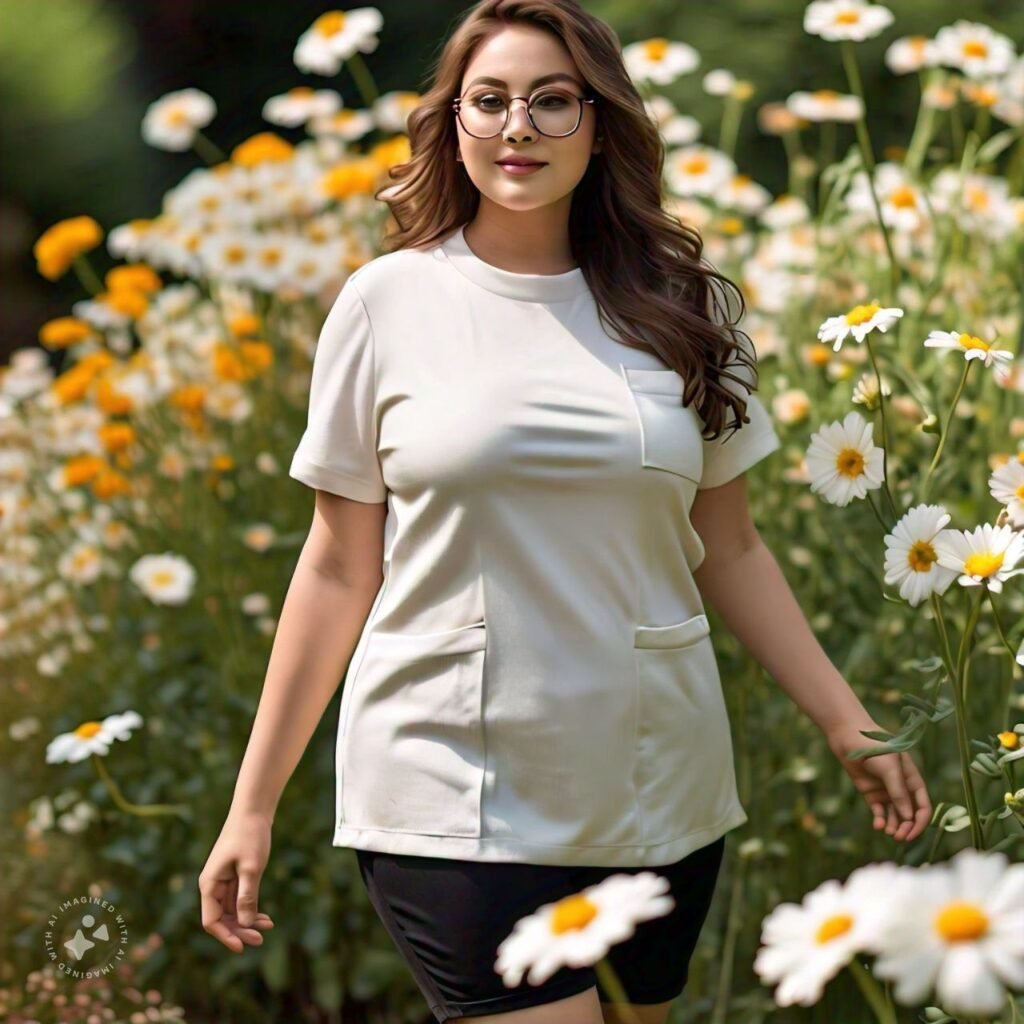
The daisy, with its unassuming beauty and widespread presence, is often overlooked in the vast world of flora, yet it holds a special place in both nature and culture. Known scientifically as Bellis perennis, the common daisy is a ubiquitous flower found across gardens, fields, and meadows around the world. Despite its modest appearance, the daisy is rich in symbolism, historical significance, and ecological importance.
2. Botanical Description
Characterized by its white petals surrounding a yellow center, the daisy’s simple structure belies its complex biological traits. The daisy belongs to the Asteraceae family, which also includes sunflowers and asters. Each daisy flower is not just a single bloom, but a composite of tiny florets grouped together, forming the central disc and surrounding ray florets. This resilient plant thrives in a variety of environments, from sunny meadows to shaded woodland areas, demonstrating its adaptability and hardiness.
3. Historical and Cultural Significance
Throughout history, the daisy has been a symbol of innocence, purity, and new beginnings. In ancient Roman mythology, the nymph Belides transformed into a daisy to escape unwanted attention, hence the flower’s Latin name, Bellis perennis. In the Victorian era, daisies symbolized chastity and purity, often included in floral arrangements given as tokens of affection. The flower’s simplicity has also made it a popular subject in art and literature, representing youth, innocence, and the fleeting nature of life.

4. Medicinal Uses
Beyond its aesthetic appeal, the daisy has been utilized in traditional medicine for centuries. Historically, daisies were used to treat wounds, coughs, and digestive disorders. The leaves and flowers were often made into poultices or teas believed to have anti-inflammatory and astringent properties. In modern herbal medicine, daisy extracts are sometimes used for their mild analgesic effects, though they have largely been replaced by more potent pharmaceuticals.

5. Daisy in Gardens and Landscaping
Whether as a ground cover or a charming addition to flower beds, daisies bring a touch of simplicity and vibrancy to any garden. Gardeners appreciate daisies for their ease of care, as they require minimal maintenance and can thrive in various soil conditions. They are often planted in clusters to create a natural, cottage-garden look or used as a cheerful filler in mixed borders. Daisies can also be grown in containers, brightening patios and balconies with their cheerful blooms.
6. Ecological Role
Daisies play an important role in supporting biodiversity, offering food and habitat for a variety of insects. The bright yellow centers of daisy flowers attract bees, butterflies, and other pollinators, making them a valuable addition to eco-friendly gardens. Additionally, daisies provide a source of nectar for beneficial insects like ladybugs, which help control garden pests. The plant’s dense foliage also offers shelter for small creatures, contributing to a healthy garden ecosystem.
7. Variations and Hybrid Species
While the common daisy is well-known, there are several other species and hybrids that offer different colors and forms. The English daisy (Bellis perennis) is the most familiar, with its white petals and yellow center. However, cultivars like the double-flowered ‘Pomponette’ and the pink-tinged ‘Habanera’ provide gardeners with colorful alternatives. Additionally, related species such as the Oxeye daisy (Leucanthemum vulgare) and the Shasta daisy (Leucanthemum × superbum) are popular for their larger blooms and extended flowering season.

8. Symbolism and Modern Interpretations
In modern times, the daisy continues to symbolize simplicity and resilience, resonating with people in various ways. The flower’s enduring nature and ability to thrive in challenging environments have made it a symbol of perseverance and hope. In popular culture, the daisy often represents unpretentious beauty and the joy found in life’s simple pleasures. Whether adorning clothing, accessories, or art, the daisy’s image remains a timeless emblem of purity and optimism.

The humble daisy, with its delicate charm and enduring presence, serves as a reminder of the beauty in simplicity and the resilience of nature. From its botanical intricacies to its rich cultural history, the daisy is much more than a common flower; it is a symbol of endurance, innocence, and the joy of new beginnings. As we continue to cultivate and celebrate this remarkable plant, the daisy will undoubtedly remain a beloved fixture in gardens and hearts around the world.
1. How often should I water daisies?
Water daisies once or twice a week, depending on the weather and soil conditions. Ensure the soil stays moist but not waterlogged. During hot, dry periods, increase watering frequency, but always allow the top inch of soil to dry out between watering sessions.
2. Can daisies grow in full shade?
Daisies prefer full sun to partial shade, requiring at least 4-6 hours of direct sunlight daily. While they can tolerate some shade, insufficient light may result in fewer blooms and leggier growth. For best results, plant them in a location that receives plenty of sunlight.
3. What type of soil is best for daisies?
Daisies thrive in well-drained, loamy soil with a slightly acidic to neutral pH (6.0-7.0). They prefer soil that retains moisture but drains excess water easily. Adding organic matter, like compost, can improve soil structure and provide the necessary nutrients for healthy growth.
4. How do I fertilize daisies?
Daisies are low-maintenance but benefit from light fertilization. Apply a balanced, slow-release fertilizer in early spring as new growth begins. Avoid excessive fertilization, as this can lead to lush foliage with fewer flowers. A compost top-dressing also helps provide steady nutrients throughout the growing season.

5. When is the best time to plant daisies?
Plant daisies in early spring or early fall when temperatures are mild. Spring planting allows roots to establish before the summer heat, while fall planting enables roots to develop before winter dormancy. Both times ensure strong growth and abundant blooms the following season.

6. How do I deadhead daisies?
Deadhead daisies by snipping off spent flowers just above the next set of leaves or lateral buds. This encourages continuous blooming by redirecting the plant’s energy from seed production to producing new flowers. Regular deadheading also keeps the plant looking tidy and healthy.
7. Can daisies grow in containers?
Yes, daisies grow well in containers as long as they have sufficient drainage and receive enough sunlight. Use a high-quality potting mix and ensure the container has drainage holes. Water regularly, and feed with a balanced liquid fertilizer every 4-6 weeks during the growing season.
8. How do I protect daisies from pests?
Protect daisies from pests like aphids and slugs by regularly inspecting plants and removing pests by hand or using insecticidal soap. Introducing beneficial insects like ladybugs can help control aphid populations. Slug traps or barriers like crushed eggshells can deter slugs and snails.
9. Should I mulch around daisies?
Mulching around daisies is beneficial as it helps retain soil moisture, suppresses weeds, and regulates soil temperature. Use organic mulch, like compost or bark chips, and apply a 2-3 inch layer around the base, leaving some space around the stems to prevent rot.
10. How do I divide daisies?
Divide daisies every 2-3 years in early spring or fall to prevent overcrowding and maintain vigorous growth. Dig up the clump, gently separate the roots into smaller sections, and replant them in well-prepared soil at the same depth they were growing previously.
11. Can daisies survive winter?
Daisies are hardy perennials that can survive winter in most climates. In colder regions, protect them by mulching heavily around the base to insulate the roots. Daisies may die back to the ground in winter, but they typically regrow from the roots in spring.
12. How tall do daisies grow?
Daisies typically grow between 6 to 12 inches in height, though some varieties can reach up to 18 inches. Their height depends on the specific cultivar, growing conditions, and care provided. Taller varieties may require staking to prevent them from toppling over in wind or rain.
13. Can I grow daisies from seed?
Yes, daisies can be easily grown from seed. Sow seeds indoors 6-8 weeks before the last frost or directly in the garden after the danger of frost has passed. Lightly press the seeds into the soil, keep them moist, and they should germinate in 2-3 weeks.
14. How long do daisy plants live?
Daisy plants typically live for several years, with some lasting up to 5-7 years or more with proper care. Regular division, deadheading, and appropriate fertilization can extend their lifespan and keep them blooming profusely year after year.
15. How do I prevent daisy plants from becoming leggy?
To prevent legginess, ensure daisies receive adequate sunlight (at least 4-6 hours daily) and avoid over-fertilization, which can promote excessive leafy growth. Pinch back young plants early in the season to encourage bushier growth, and regularly deadhead spent blooms.
16. Are daisies drought-tolerant?
Daisies are moderately drought-tolerant once established, but they prefer consistent moisture, especially during their active growing season. In prolonged dry periods, water deeply but infrequently to encourage deep root growth. Mulching can also help conserve soil moisture.
17. Can daisies be propagated from cuttings?
Yes, daisies can be propagated from stem cuttings. Take 4-6 inch cuttings from healthy, non-flowering stems in late spring or early summer. Remove the lower leaves, dip the cut end in rooting hormone, and plant it in a potting mix. Keep the cutting moist until roots develop.
18. How do I prune daisies?
Prune daisies by cutting back the plant to about 2-3 inches above the ground after the first hard frost or in early spring before new growth begins. This encourages healthy regrowth and prevents the plant from becoming too woody or leggy over time.
19. What pests commonly affect daisies?
Common pests that affect daisies include aphids, slugs, snails, and spider mites. Aphids suck sap from stems and leaves, while slugs and snails chew on foliage. Spider mites cause stippling on leaves. Regular inspection and treatment with organic or chemical controls can manage these pests.
20. How can I prevent powdery mildew on daisies?
To prevent powdery mildew, plant daisies in well-spaced locations with good air circulation and full sun. Avoid overhead watering, and water at the base of the plant to keep foliage dry. If powdery mildew appears, treat it with a fungicidal spray or homemade remedies like neem oil.
21. How do I improve daisy bloom production?
Improve bloom production by ensuring daisies receive full sun, regular watering, and light fertilization. Deadheading spent blooms encourages continuous flowering. Additionally, dividing overcrowded plants every few years and providing them with well-drained, fertile soil can lead to more prolific blooms.
22. Do daisies need staking?
Most daisy varieties do not require staking, but taller species or those grown in windy areas may benefit from support. Use stakes or plant supports placed discreetly behind the plant to prevent stems from flopping over and keep the plant looking neat and upright.
23. How do I control weeds around daisies?
Control weeds around daisies by applying a 2-3 inch layer of mulch around the base of the plants, which suppresses weed growth and retains soil moisture. Hand-pulling weeds regularly or using a garden hoe can also help keep the area around daisies free from competition.
24. What companion plants work well with daisies?
Daisies pair well with other sun-loving perennials like lavender, echinacea, and coreopsis. They also complement ornamental grasses and annuals like marigolds and zinnias. These companions create a colorful, low-maintenance garden that attracts pollinators and enhances visual appeal.
25. How do I transplant daisies?
To transplant daisies, dig up the plant carefully, preserving as much of the root ball as possible. Replant in a prepared hole at the same depth as before, water thoroughly, and mulch around the base. Transplant in early spring or fall when temperatures are cooler.
26. Can daisies be grown indoors?
Daisies can be grown indoors with sufficient light and care. Place them in a bright spot, such as a south-facing window, where they receive at least 4-6 hours of sunlight daily. Water regularly and use a well-draining potting mix. Indoor daisies may not bloom as prolifically as outdoor ones.
27. How do I care for daisies in hot climates?
In hot climates, plant daisies in a location with morning sun and afternoon shade to protect them from intense heat. Water more frequently during hot, dry periods, and apply a thick layer of mulch to retain moisture and keep roots cool. Regular deadheading promotes continuous blooms.
28. Why are my daisies not blooming?
Daisies may not bloom due to insufficient sunlight, poor soil conditions, or over-fertilization. Ensure they receive at least 4-6 hours of sunlight, improve soil drainage, and avoid excessive nitrogen, which promotes leafy growth over flowers. Deadheading spent blooms can also encourage more flowering.
29. How do I protect daisies from frost?
To protect daisies from frost, mulch heavily around the base to insulate roots, especially in colder climates. In areas with severe frost, consider covering the plants with frost cloths or bringing potted daisies indoors during freezing nights to prevent frost damage.
30. Are daisies deer-resistant?
Daisies are somewhat deer-resistant, as their bitter taste makes them less appealing to deer. However, hungry deer may still nibble on them, especially if other food sources are scarce. Planting daisies alongside more strongly scented, deer-repellent plants can help deter deer from your garden.
